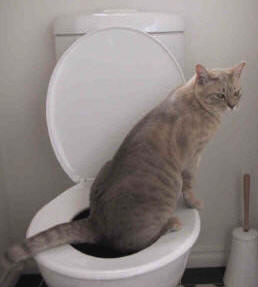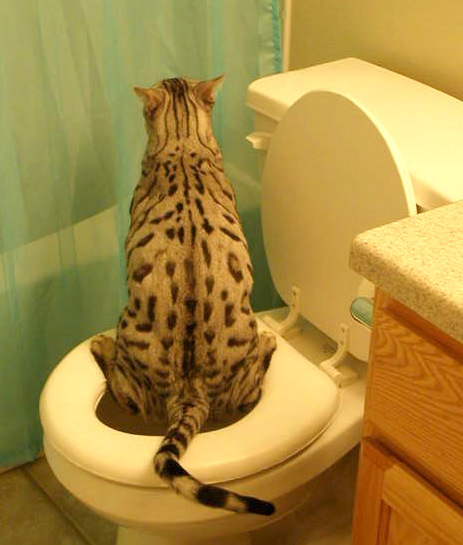Why Flushing Cat Poop Down Your Toilet May Cause Problems - Recommendations for Safe Handling
Why Flushing Cat Poop Down Your Toilet May Cause Problems - Recommendations for Safe Handling
Blog Article
Are you trying to find additional info around Don’t flush cat feces down the toilet?

Introduction
As pet cat proprietors, it's essential to be mindful of exactly how we dispose of our feline good friends' waste. While it might seem hassle-free to purge feline poop down the toilet, this method can have detrimental effects for both the environment and human wellness.
Alternatives to Flushing
Thankfully, there are much safer and much more accountable means to take care of feline poop. Think about the adhering to choices:
1. Scoop and Dispose in Trash
One of the most usual method of taking care of pet cat poop is to scoop it into a biodegradable bag and throw it in the garbage. Be sure to utilize a committed litter inside story and throw away the waste promptly.
2. Usage Biodegradable Litter
Select eco-friendly feline clutter made from materials such as corn or wheat. These trashes are environmentally friendly and can be securely taken care of in the garbage.
3. Hide in the Yard
If you have a backyard, take into consideration burying cat waste in a marked area away from veggie yards and water sources. Be sure to dig deep sufficient to prevent contamination of groundwater.
4. Set Up a Pet Waste Disposal System
Buy a pet waste disposal system especially designed for feline waste. These systems utilize enzymes to break down the waste, reducing odor and environmental impact.
Health Risks
Along with ecological problems, flushing cat waste can likewise present wellness risks to people. Feline feces might include Toxoplasma gondii, a bloodsucker that can create toxoplasmosis-- a potentially serious health problem, specifically for pregnant women and people with damaged immune systems.
Ecological Impact
Flushing pet cat poop presents hazardous microorganisms and bloodsuckers right into the water, posing a significant danger to water environments. These impurities can adversely impact marine life and concession water quality.
Conclusion
Responsible pet ownership expands past providing food and shelter-- it additionally involves appropriate waste administration. By avoiding flushing feline poop down the toilet and selecting different disposal methods, we can minimize our environmental footprint and secure human health.
Why Can’t I Flush Cat Poop?
It Spreads a Parasite
Cats are frequently infected with a parasite called toxoplasma gondii. The parasite causes an infection called toxoplasmosis. It is usually harmless to cats. The parasite only uses cat poop as a host for its eggs. Otherwise, the cat’s immune system usually keeps the infection at low enough levels to maintain its own health. But it does not stop the develop of eggs. These eggs are tiny and surprisingly tough. They may survive for a year before they begin to grow. But that’s the problem.
Our wastewater system is not designed to deal with toxoplasmosis eggs. Instead, most eggs will flush from your toilet into sewers and wastewater management plants. After the sewage is treated for many other harmful things in it, it is typically released into local rivers, lakes, or oceans. Here, the toxoplasmosis eggs can find new hosts, including starfish, crabs, otters, and many other wildlife. For many, this is a significant risk to their health. Toxoplasmosis can also end up infecting water sources that are important for agriculture, which means our deer, pigs, and sheep can get infected too.
Is There Risk to Humans?
There can be a risk to human life from flushing cat poop down the toilet. If you do so, the parasites from your cat’s poop can end up in shellfish, game animals, or livestock. If this meat is then served raw or undercooked, the people who eat it can get sick.
In fact, according to the CDC, 40 million people in the United States are infected with toxoplasma gondii. They get it from exposure to infected seafood, or from some kind of cat poop contamination, like drinking from a stream that is contaminated or touching anything that has come into contact with cat poop. That includes just cleaning a cat litter box.
Most people who get infected with these parasites will not develop any symptoms. However, for pregnant women or for those with compromised immune systems, the parasite can cause severe health problems.
How to Handle Cat Poop
The best way to handle cat poop is actually to clean the box more often. The eggs that the parasite sheds will not become active until one to five days after the cat poops. That means that if you clean daily, you’re much less likely to come into direct contact with infectious eggs.
That said, always dispose of cat poop in the garbage and not down the toilet. Wash your hands before and after you clean the litter box, and bring the bag of poop right outside to your garbage bins.
https://trenchlesssolutionsusa.com/why-cant-i-flush-cat-poop/

I came across that blog posting on Don’t flush cat feces down the toilet while doing a search on the internet. Enjoyed reading our entry? Please share it. Help others check it out. I enjoy reading our article about Don’t flush cat feces down the toilet.
Schedule Appointment Report this page